Enhanced TDS
Identification & Functionality
- Chemical Family
- RTU Product Type
- Technologies
- Product Families
Features & Benefits
Applications & Uses
- Application Area
- Composites Processing Methods
- Cure Method
- Product End Uses
- Markets
- Applications
- Product Processing Instructions
- Filament winding
- Pultrusion
- Wet laminating
- Filament Winding
- Application Information
- Manufacture of electrical laminates (tubes, rods, etc.)
- Impregnation of high voltage bushings, coils etc.
Properties
- Product Data
ARALDITE® MY 740 Unmodified, medium-viscosity, solvent-free epoxy resin
Property Value Unit Test Method Condition Viscosity 10,000 - 14,500 mPa s ISO 12058 at 25°C Epoxy content 5.25 - 5.55 equiv/kg ISO 3001 - Density 1.15 - 1.20 g/cm³ ISO 1675 at 25°C Flash point > 200 °C ISO 1523 - Vapour pressure (at 25°C) < 0.01 Pa Knudsen at 25°C Vapour pressure (at 60°C) < 0.5 Pa Knudsen at 60°C ARADUR® HY 906 Liquid, dicarboxylic anhydride
Property Value Unit Test Method Condition Viscosity 175 - 350 mPa s ISO 12058 at 25°C Density 1.20 - 1.25 g/cm³ ISO 1675 at 25°C Flash point > 135 °C ISO 1523 - Vapour pressure (at 50°C) < 20 Pa Knudsen at 50°C ACCELERATOR DY 070 Liquid, heterocyclic amine
Property Value Unit Test Method Condition Viscosity < 50 mPa s ISO 2555 at 25°C Density 0.95 - 1.05 g/cm³ ISO 1675 at 25°C Flash point 92 °C ISO 1523 - Vapour pressure (at 20°C) 15 Pa Knudsen at 20°C
Technical Details & Test Data
- Mechanical & Physical Properties
Determined on standard test specimens at 23°C. Cured for 30 min/110°C + 30 min/170°C + 30 min/200°C
Tensile strength 75 - 85 MPa ISO 527 - Elongation at break 3.5 - 4.5 % ISO 527 - E modulus from Tensile Test 3,000 - 4,000 MPa ISO 527 - Flexural strength at 23°C 140 - 150 MPa ISO 178 at 23°C Surface strain at 23°C 5.5 - 6.5 % ISO 178 at 23°C E modulus from Flexural Test 2,500 - 3,500 MPa ISO 178 - Bend Notch Test - - CG 216-0/89 - Critical stress intensity factor (K1C) 0.5 - 0.7 MPa·m¹/₂ - - Specific energy at break (G1C) 70 - 100 J/m² - - Glass Transition Temperature (DSC) 165 - 175 °C ISO 11357-2 - Coefficient Of Linear Thermal Expansion 65 - 70 10⁻⁶ / K ISO 11359-2 20-60°C Thermal conductivity 0.15 - 0.20 W/mK ISO 8894-1 - Water Absorption (10 days at 23°C) 0.50 - 0.60 % by wt. ISO 62 at 23°C Water Absorption (60 min at 100°C) 0.20 - 0.25 % by wt. ISO 62 at 100°C Decomposition temperature (10K/min) 350 °C DTA - - Product Properties
- Good mechanical and dielectric properties
- Good aging resistance
- Electrical Properties
Determined on standard test specimens at 23°C. Cured for 30 min/110°C + 30 min/170°C + 30 min/200°C
Key Value Unit Test Mehod Breakdown strength 22 - 26 kV/mm IEC 60243-1 HV arc resistance 70 - 80 s IEC 61621 Tracking resistance > 600-0.0 CTI IEC 60112 Tracking resistance (Test Solution A) > 600M-0.1 CTI IEC 60112 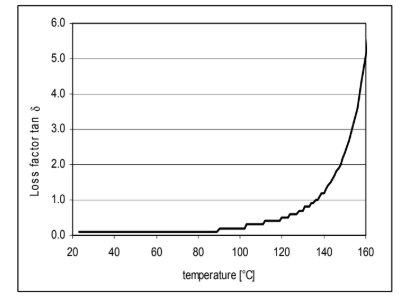
Figure 4: Loss factor (tan δ) at 50 Hz (IEC 60250)
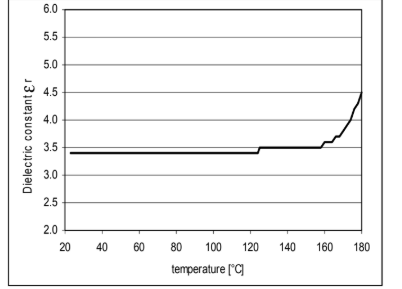
Figure 5: Rel. permittivity (εr) at 50 Hz (IEC 60250)
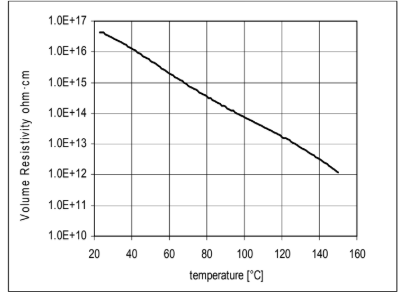
Figure 6: Volume resistivity at 50 Hz (IEC 60093)
- Processing Guidelines
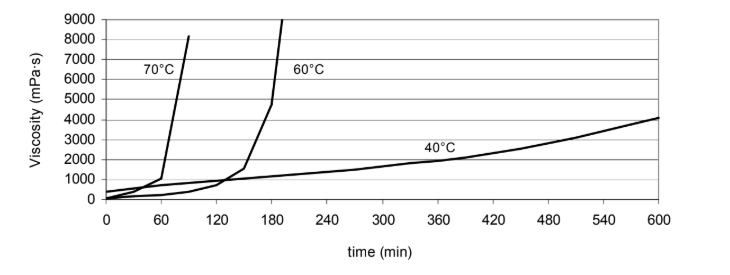
Figure 1: Viscosity increase at 40, 60 and 70 °C (measurements with Rheomat 115A, Shear rate D = 10 s⁻¹)
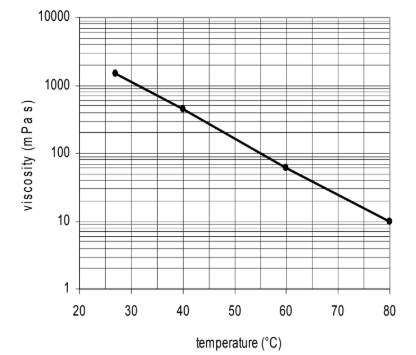
Figure 2: Initial viscosity as a function of temperature (measurements with Rheomat 115, D = 10 s⁻¹)
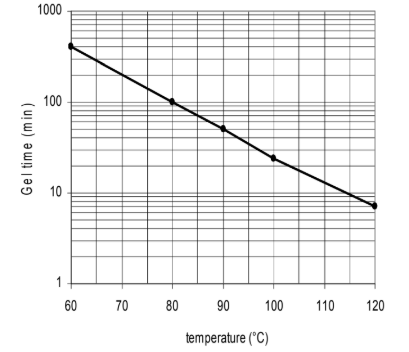
Figure 3: Gel time as a function of temperature (measured with Gelnorm Instrument, ISO 9396)
Safety & Health
- Handling Precautions
Personal hygiene Safety precautions at workplace protective clothing overalls gloves essential arm protectors recommended when skin contact likely goggles/safety glasses yes Skin protection before starting work Apply barrier cream to exposed skin after washing Apply barrier or nourishing cream Cleansing of contaminated skin Dab off with absorbent paper, wash with warm water
and alkali-free soap, then dry with disposable towels.
Do not use solventsDisposal of spillage Soak up with sawdust or cotton waste and deposit in
plastic-lined binVentilation of workshop Renew air 3 to 5 times an hour Ventilation of workplaces Exhaust fans. Operatives should avoid inhaling
vapoursFirst Aid : Contamination of the eyes by resin, hardener or mix should be treated immediately by flushing with clean, running water for 10 to 15 minutes. A doctor should then be consulted. Material smeared or splashed on the skin should be dabbed off, and the contaminated area then washed and treated with a cleansing cream (see above). A doctor should be consulted in the event of severe irritation or burns. Contaminated clothing should be changed immediately. Anyone taken ill after inhaling vapours should be moved out of doors immediately. In all cases of doubt call for medical assistance.
- Industrial Hygiene
Mandatory and recommended industrial hygiene procedures should be followed whenever our products are being handled and processed.
Storage & Handling
- Storage Conditions
Provided that the products described above are stored in a dry place in their original, properly closed containers between 2 - 40°C. Under these conditions, the shelf life will correspond to the expiry date stated on the label. After this date, the product may be processed only on re-analysis. Partly emptied containers should be closed immediately after use. Aradur HY 906 is sensitive to moisture, storage containers should be ventilated with dry air only.
Other
- Application Information
Value Units Test Method / Conditions Mix Ratio 0.012 %(W) %(W) Accelerator : Resin Mix Ratio 0.95 %(W) %(W) Hardener : Resin
